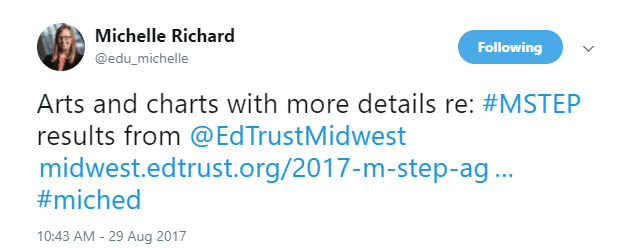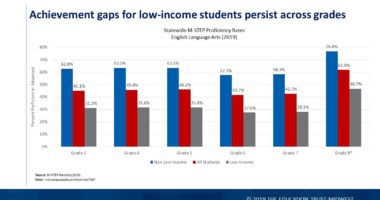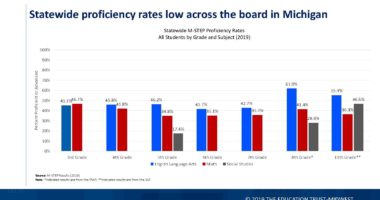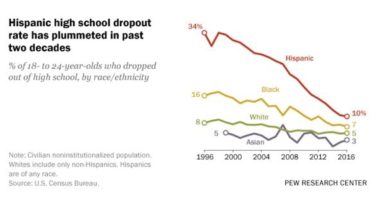Mich. Ed. Roundup – September 5
M-STEP Results Show Need to Build on Progress, Not Reset the Clock
While Michigan has made modest progress in many grades and subject areas, third-grade proficiency rates in English language arts have declined for the third year in a row. Statewide proficiency in English language arts for third-grade students has slipped from 50 percent proficient in 2015 to 44.1 percent proficient in 2017.
Michigan has taken the important step of setting high expectations for all of our students and using an honest tool to measure our progress. Now is the time to build on this progress.
Michigan Gambled on Charter Schools. Its Children Lost.
New Concerns in Michigan’s Fourth Take at an ESSA Plan
Noteworthy News
- Stateside with Cynthia Canty – Michigan Radio
- Our editorial: Keep high standards for schools – The Detroit News
- 2017 M-STEP results in Michigan reveal a troubling trend in education – Lori Higgins, Detroit Free Press
- M-STEP scores show some improvement, but English language arts results “disappointing” – Emma Winowiecki, Michigan Radio
- Finley: We shouldn’t rest until every kid can read – Nolan Finley, The Detroit News
- Michigan Gambled on Charter Schools. Its Children Lost. – Mark Binelli, The New York Times Magazine
Capital Update
Tweet of the Week




